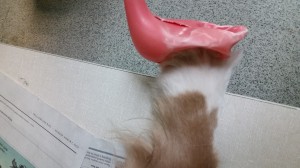With Easter around the corner it seems a good time to talk about rabbits as pets. Although they do make good pets, they aren’t the most ideal for children and certainly should not be purchased on a whim, just because, well it is Easter bunny time after all. As with all new pet additions to any home, it is good to do your research first. Be aware of the time, feeding, housing and care required for the pet you are considering, and remember that your veterinarian is your best source of information.
Our most exotic knowledgable and experienced tech Meghan has written this great post to provide you with the information you need if you are considering adding a rabbit to your household.
by: Meghan Eggertson
The popularity of rabbits as house pets has grown greatly in the last couple decades. They are very social, most active in the morning and evening (when their people are usually home), clean, and quiet, making them a great companion for many people. For most of their domesticated history, rabbits have been used as production animals (for meat and fur) and more recently in research settings – but the needs for these rabbits are different from those of the pet rabbit, which is what will be discussed in this article.
Behaviour
Rabbits are very social animals that like companionship; however, they have very strong feelings of like or dislike towards other rabbits. When introducing rabbits to one another, do not allow them direct access to each other initially. Place them in separate cages/areas where they can see and smell each but cannot physically interact for a few days. If both of the rabbits seem comfortable with the other’s presence, they can be placed directly on either side of a barrier (such as a baby gate or wire mesh cage top). If they continue to do well in each other’s presence (laying down near each other, touching noses, etc.) the

Tech Meghan snuggling a surgery patient
rabbits can be allowed in the same area under supervision. Dogs and cats can also be trained to accept the presence of rabbits, but they should not be left alone with them unsupervised.
Enrichment is necessary for a rabbit’s well-being. They should be provided with lots of items to chew on such as branches from fruit trees, untreated sisal mats, and cardboard rolls. They also enjoy toys that they can toss around such as hard plastic cat balls and toy keys. Places to hide such as tubes or tunnels, boxes, or “igloos” also need to be provided.
If kept in a cage, your rabbit needs to also be provided with access to larger areas where they can run around and exercise. Exercise is not only mentally beneficial but also helps with digestion and decreases the risk of foot and bone issues. If inside the house, make sure all electrical cords are covered or out of reach and plants are not accessible. Be aware that some rabbits also like to chew on baseboards and drywall or furniture; baby gates or exercise pens may be set up to keep them out of certain areas. If your floors are smooth (wood, tile, linoleum, etc.) place a mat or rug down so that your rabbit can get traction. Outdoor exercise areas can also be set up for your rabbit using a dog exercise pen. Make sure the grass is not treated and the area is protected from predators (including dogs and cats).
Housing
There is a wide variety of commercial and homemade options available for housing your rabbit, but they should all follow the following guidelines:
- Your rabbit should have enough room to stretch and hop around and the roof should
 not touch its ears when it is standing.
not touch its ears when it is standing.
- The area should be will ventilated (i.e. wire mesh should be used, not glass) as rabbits are more sensitive to the heat than the cold.
- Due to their sensitivity to heat they should not be placed in direct sunlight.
- Ideally the bottom should be solid, not mesh, to prevent pododermatitis (foot sores) and plastic because it is easy to clean.
Bedding may consist of hay, wood shavings, newspaper, or a blanket/towel. Fabric (blanket or towel) should only be used if the rabbit does not like to chew on it. If using shavings, make sure they are not made of preserved pine or cedar as the fumes from these are toxic to the rabbit’s liver. Newspaper may cause staining on the feet of light coloured rabbits, but the ink is vegetable based and nor harmful. If the rabbit is not litter trained the bedding should be changed every couple of days, but if it uses a litter box the bedding only needs to be changed every 1-2 weeks.
 Litter training is relatively easy for rabbits. Use a pelleted litter, like Yesterday’s News, not clumping or clay based litter which if ingested can impact the caecum. Place the litter box in the area of the cage that the rabbit already uses as its toilet. It is sometimes helpful to place your rabbit’s hay next to or in the litter box because rabbits like to eat as they defecate. Clean the box out every day or two. After a few weeks using the box, it can be moved to whatever location the owner desires and the rabbit should continue using it.
Litter training is relatively easy for rabbits. Use a pelleted litter, like Yesterday’s News, not clumping or clay based litter which if ingested can impact the caecum. Place the litter box in the area of the cage that the rabbit already uses as its toilet. It is sometimes helpful to place your rabbit’s hay next to or in the litter box because rabbits like to eat as they defecate. Clean the box out every day or two. After a few weeks using the box, it can be moved to whatever location the owner desires and the rabbit should continue using it.
If the housing area needs to be cleaned, diluted vinegar or CLR can be used to remove urine scale. Let it sit for a few minutes, use a scrub pad if needed, then rinse very well with running water (especially if using CLR). Bleach can also be used for disinfecting at a ratio of 30mL bleach to 1L water; again, make sure to rinse very well afterwards.
Feeding
Rabbits are vegetarians and hind-gut fermenters – this means they need to re-ingest their “night feces” (caecotrophs), which are a source of amino acids and vitamins. Caecotrophs look like a little mucous encapsulated cluster of grapes. Rabbits normally ingest these right away, so they are not usually seen by the owners.
Rabbits eat constantly and require a high fibre diet. The majority of their diet should be hay: not only is it high in fibre, but it wears the teeth down and can be grazed on all day long. Grass or timothy hay is ideal; alfalfa hay is high in calcium and protein and can lead to obesity and urinary crystals. Make sure the hay looks and smells fresh and is stored in a dry area.
Pellets are good as a more concentrated source of nutrients. They should be timothy (not alfalfa based), have no artificial colours, and be uniform. “Mixed ration” type food is not ideal as some rabbits pick out their favourite ingredients which can lead to a deficit in vitamins and minerals. Pellets should not be fed ad-lib but restricted to about 20% of the daily diet; most recommended feeding amounts on bags are for commercial rabbits and are usually more than what a pet rabbit needs. Offer the pellets just once daily, and whatever isn’t eaten in a couple of hours should be removed.
A variety of fresh vegetables can also be fed as a supplement to the hay and pellets. Limit the amount of fruits and carrots given as these are high in sugar. Some greens such as kale, spinach, alfalfa, and dandelion greens should also be fed in moderation as they are high in calcium which can be hard on the kidneys. The best vegetables to feed include broccoli, brussels sprouts, cabbage, carrot tops, parsley, cauliflower leaves, parsnip, and green beans. If a change in diet needs to be made, it should be done over at least a 5 day period so that the rabbit’s gastrointestinal system has time to adjust.
Salt and mineral blocks or vitamin supplementation are not needed as long as the rabbit is receiving a balanced diet (as described above), unless specifically recommended by your veterinarian. Some rabbits chew their mineral blocks out of boredom which may result in harmful levels of calcium.
A good supply of fresh water should always be available to your rabbit. Rabbits have high water consumption and a 2.5kg (5.5lb) rabbit can drink a cup of water a day. Water is extremely important in the digestion of the rabbit’s high fibre diet and therefore should not be withheld for any length of time.

Dr. Fisher with a Lionhead rabbit

Tech Meghan with her rabbit Briar
Types
Lionhead, dwarf, angora, lop…. the list goes on. Although there are many types of rabbits when it comes to the information provided above, all pet rabbits are the same – they all require the same stimulation, housing, and feeding. The only thing to consider is that longer-haired rabbits, such as the angora, may require additional coat care with brushing and possible shaving of the backend to prevent matting and urine scalding.
Rabbits truely are a fun and interactive pet and can provide a lot of companionship. If you do decide to get a pet rabbit, it is recommended that they receive a yearly veterinary visit (just like cats and dogs!) with a veterinarian with rabbit experience to make sure there aren’t any underlying health issues. If you are considering getting a rabbit (or alreay have one) and have any other questions, please call the clinic and we will be more than happy to help.
Additional Resource:
House Rabbit Society
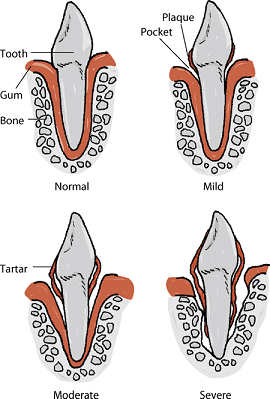


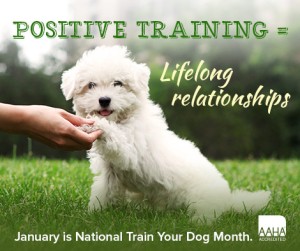
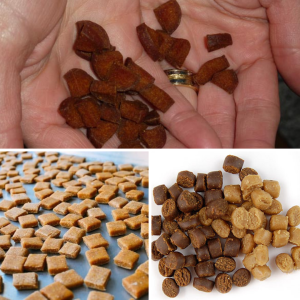
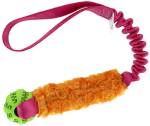
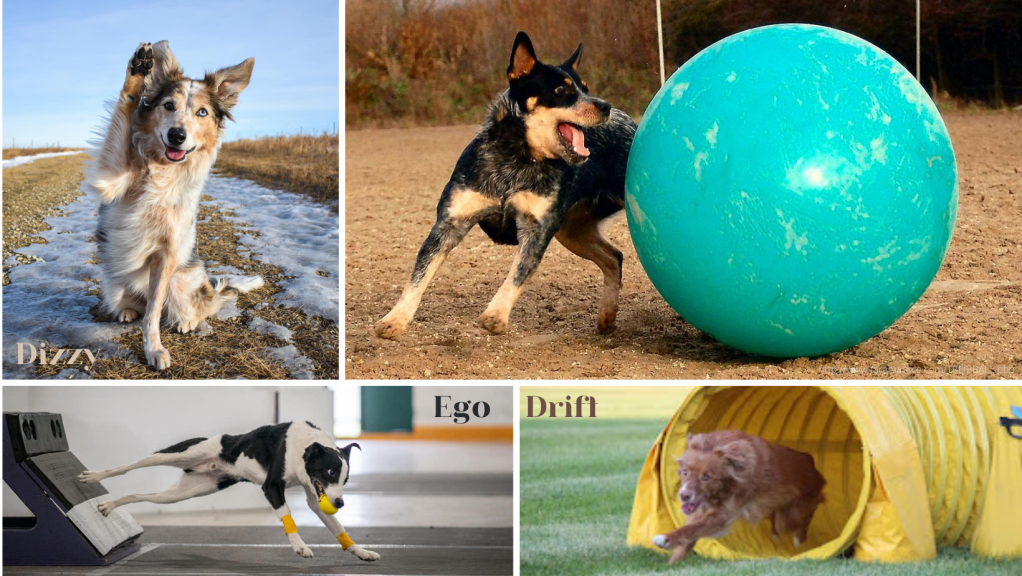

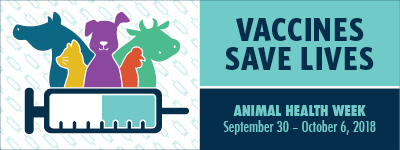
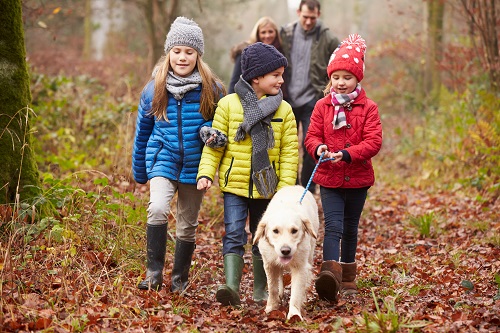
 working to educate on the importance of annual preventative health exams. Having your pet seen annually can be especially helpful if your pet gets sick or as your pet ages.
working to educate on the importance of annual preventative health exams. Having your pet seen annually can be especially helpful if your pet gets sick or as your pet ages.



 Our cats on the other hand are at our mercy – we control the food. We can control how much and when they get to eat. Unfortunately many of us grew up thinking you just pour food in a bowl, walk away and do it again when the bowl gets low or (God forbid) empty! If you currently feed your cat this way I want you to do a self-test:
Our cats on the other hand are at our mercy – we control the food. We can control how much and when they get to eat. Unfortunately many of us grew up thinking you just pour food in a bowl, walk away and do it again when the bowl gets low or (God forbid) empty! If you currently feed your cat this way I want you to do a self-test:


 With the new layers of ice even more salt/sand mixtures are being applied to roadways and ice melt being applied to walkways. The salt from the roadway can be harmful to a pet’s paws and can make them sick if they groom it off. Ice melt, if not pet friendly can also be hard on paws and potentially toxic if they lick it off.
With the new layers of ice even more salt/sand mixtures are being applied to roadways and ice melt being applied to walkways. The salt from the roadway can be harmful to a pet’s paws and can make them sick if they groom it off. Ice melt, if not pet friendly can also be hard on paws and potentially toxic if they lick it off.

 If your pet is sick, your veterinarian may recommend performing lab tests to help determine the underlying cause of your pet’s symptoms. These tests can provide a lot of important information to your veterinarian regarding the diagnosis and therefore the appropriate treatment. Even if all the results come back in the normal range, this helps your veterinarian rule out several potential causes of the symptoms your pet is having and these results can then be used as a baseline to compare to future tests.
If your pet is sick, your veterinarian may recommend performing lab tests to help determine the underlying cause of your pet’s symptoms. These tests can provide a lot of important information to your veterinarian regarding the diagnosis and therefore the appropriate treatment. Even if all the results come back in the normal range, this helps your veterinarian rule out several potential causes of the symptoms your pet is having and these results can then be used as a baseline to compare to future tests.
 Lab tests are a very important tool for your veterinarian. They provide essential information to allow for a precise diagnosis, which allows your veterinarian to provide specific treatment, which can help save time, money, and prevent the needless suffering of your pet.
Lab tests are a very important tool for your veterinarian. They provide essential information to allow for a precise diagnosis, which allows your veterinarian to provide specific treatment, which can help save time, money, and prevent the needless suffering of your pet.



 not touch its ears when it is standing.
not touch its ears when it is standing. Litter training is relatively easy for rabbits. Use a pelleted litter, like Yesterday’s News, not clumping or clay based litter which if ingested can impact the caecum. Place the litter box in the area of the cage that the rabbit already uses as its toilet. It is sometimes helpful to place your rabbit’s hay next to or in the litter box because rabbits like to eat as they defecate. Clean the box out every day or two. After a few weeks using the box, it can be moved to whatever location the owner desires and the rabbit should continue using it.
Litter training is relatively easy for rabbits. Use a pelleted litter, like Yesterday’s News, not clumping or clay based litter which if ingested can impact the caecum. Place the litter box in the area of the cage that the rabbit already uses as its toilet. It is sometimes helpful to place your rabbit’s hay next to or in the litter box because rabbits like to eat as they defecate. Clean the box out every day or two. After a few weeks using the box, it can be moved to whatever location the owner desires and the rabbit should continue using it.


 Magnum, my 7-year-old Nova Scotia Duck Tolling Retriever found one of those items that you may not think is a hazard, especially if you have dogs that don’t tend to eat toys. He loves to pull them apart but he never eats the bits!
Magnum, my 7-year-old Nova Scotia Duck Tolling Retriever found one of those items that you may not think is a hazard, especially if you have dogs that don’t tend to eat toys. He loves to pull them apart but he never eats the bits!